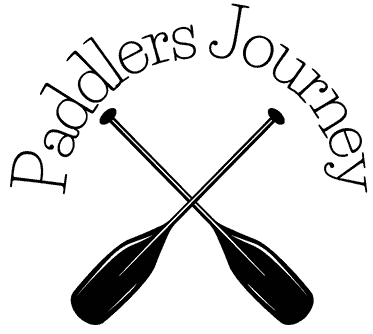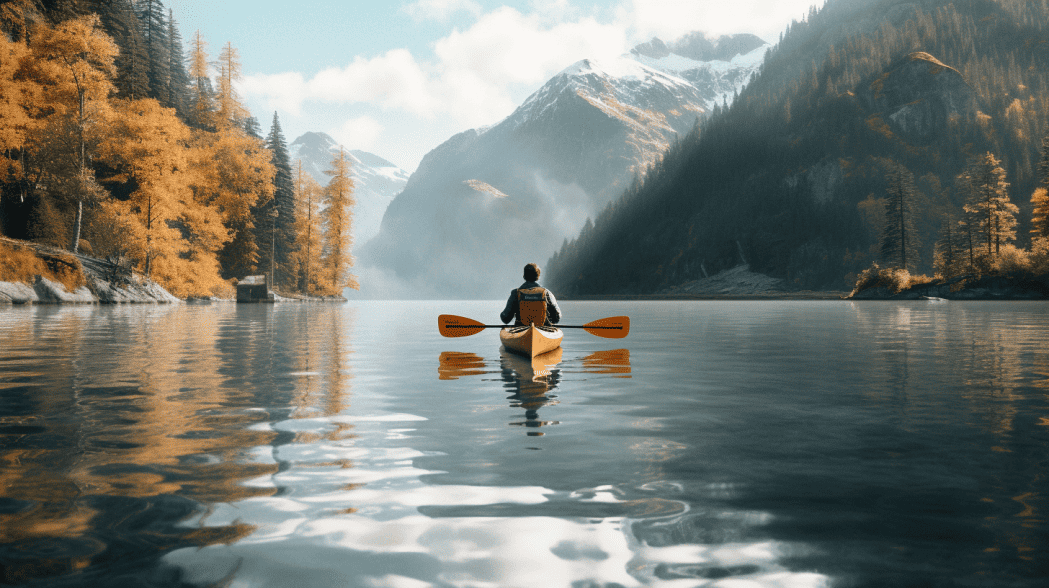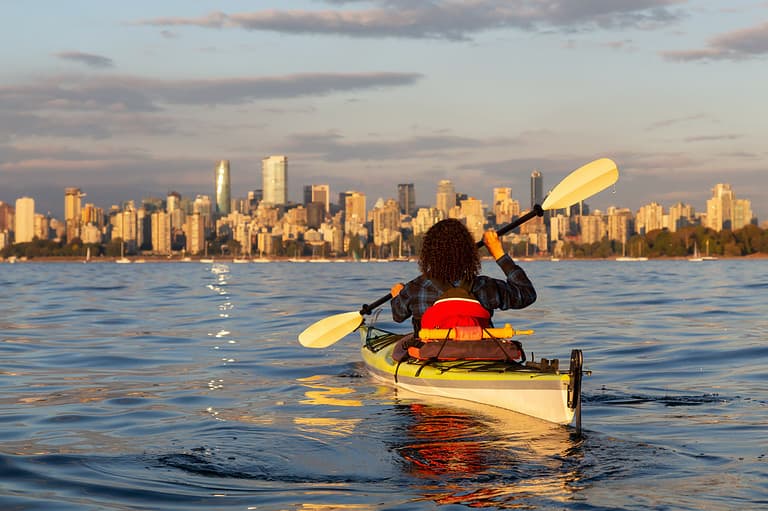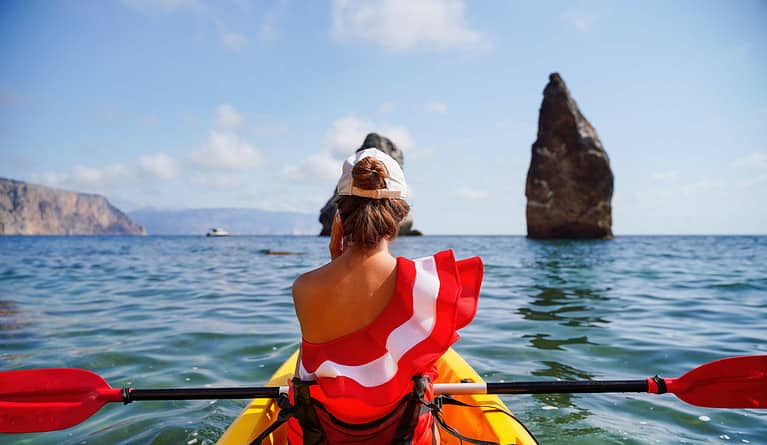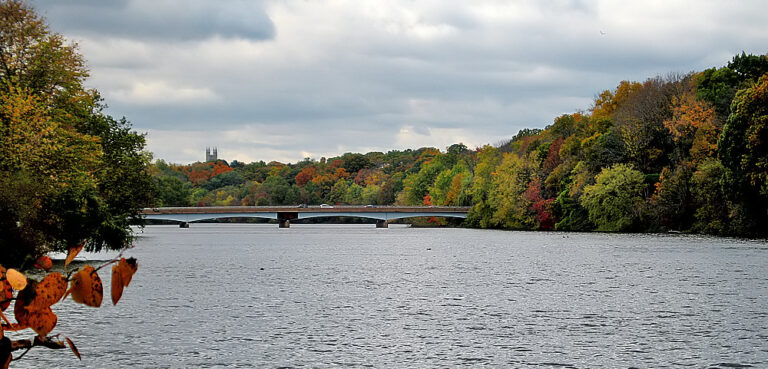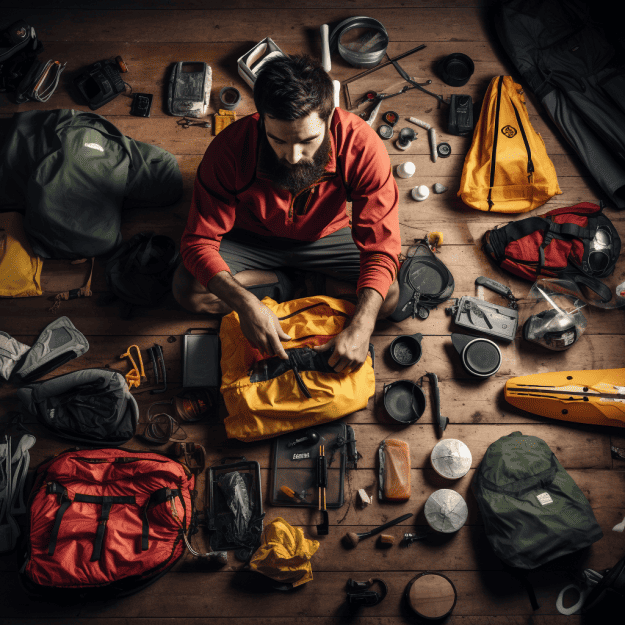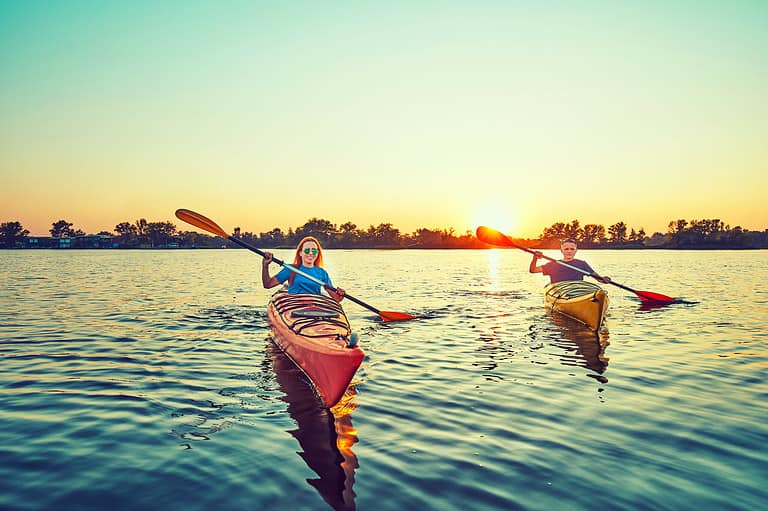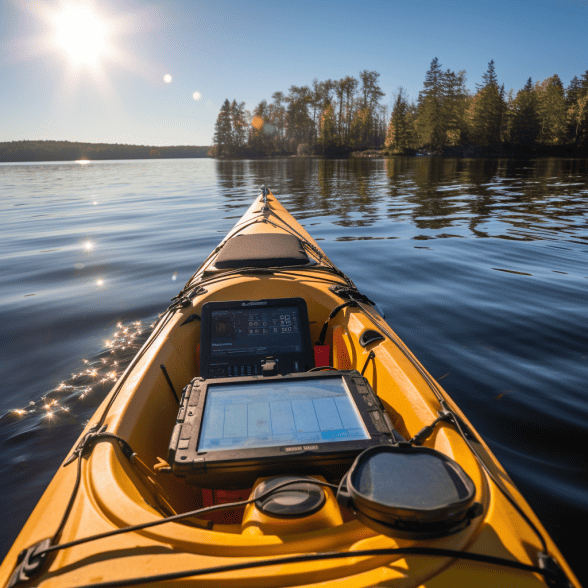the best Paddling 101
So let me take you on a journey through “Paddling 101.”We’ll cover everything from choosing the right paddle craft for your needs to safety tips and techniques to make your next trip on the water as enjoyable as possible. So grab a paddle (or rent one), throw on some sunscreen, and let’s dive into this exciting world of adventure!
As a lifelong lover of the water, there’s nothing quite like the freedom of paddling. It’s an activity that lets you explore at your own pace, and feel the sun on your skin and the wind in your hair while immersing yourself in nature. Whether you’re new to paddling or a seasoned pro, there’s always something new to learn and experience.
Key Takeaways
- Paddling is a water activity for exploring nature, with inflatable and solid paddlecraft options available in solo and tandem styles.
- Safety is crucial, including wearing a PFD and carrying emergency supplies. Basic paddling techniques, such as forward and backward strokes, turning and stopping techniques, and adjusting for wind and waves, should be learned.
- Choosing a safe and enjoyable route is important, considering factors like water conditions, scenic views, distance, access points, and camping options.
- Proper preparation is key for successful paddling trips, including packing smartly, considering factors for overnight trips like campsite selection and meal planning, wearing appropriate clothing, and carrying necessary safety equipment.
Paddling 101 Choose Your Paddlecraft
Now it’s time for you to choose your paddlecraft, so let’s get started! When selecting a paddlecraft, there are two main types: inflatable and solid. An inflatable paddlecraft is perfect if you have limited storage space or need something portable for travel. They’re easy to inflate and deflate, making them a great option for those who want to hit the water quickly. Solid paddlecraft, on the other hand, provide more stability and durability than their inflatable counterparts.
Once you’ve decided whether you want an inflatable or solid craft, it’s time to think about how many people will be paddling. If you plan on going solo most of the time, consider purchasing a solo kayak or canoe. These designs typically feature a narrower hull and are easier to maneuver through tight spaces. If you prefer paddling with others, then a tandem kayak or canoe might be the way to go. Tandem options offer more space but can be heavier and harder to control.
Now that you’ve chosen your paddlecraft type and size, it’s essential to gear up properly before hitting the water. Ensure everyone on board has a personal flotation device (PFD) that fits well and is comfortable enough for extended wear. Additionally, don’t forget about sunscreen, sunglasses with UV protection, appropriate footwear (water shoes or sandals), and waterproof bags for storing valuables like phones or wallets while on the water. With your gear in check and your craft selected, it’s time to hit the water!
Paddling 101 Gear Up
Before you hit the water, make sure to suit up with all the necessary gear to enjoy your time on the waves fully. Proper attire is essential for a comfortable and safe paddling experience. A wetsuit or drysuit is recommended for colder waters, while quick-drying clothing suits warmer temperatures. Don’t forget to wear appropriate footwear such as neoprene booties or sandals with good grip to prevent slipping on wet surfaces.
In addition to proper attire, essential accessories should also be considered before embarking on your paddling adventure. A personal flotation device (PFD) is a must-have item that will keep you safe in an emergency. Choosing a PFD that fits well and feels comfortable is important, so you won’t be tempted to take it off during your trip. Other useful accessories include a paddle leash to prevent losing your paddle in strong currents and a waterproof bag or case for your phone, wallet, and other valuables.
With the right gear, you’ll be ready to tackle any waterway with confidence and ease. However, don’t forget that safety should always come first when engaging in any water sport. Stay tuned for our next section, where we discuss some important safety tips every paddler should know before hitting the waves!
Paddling 101 Safety First
Ensuring your safety is paramount when you’re out on the water, so prioritize it by taking necessary precautions and wearing appropriate gear. One of the most important things to consider is proper attire. This includes a life jacket or personal flotation device (PFD), which should fit snugly and be worn while paddling. It’s also important to wear clothing that will keep you warm and dry, such as wetsuits or dry suits.
Emergency preparedness is another key aspect of staying safe while paddling. Before heading out on the water, please familiarize yourself with the area and its potential hazards. Bring along a first aid kit, as well as any necessary medications or medical devices. It’s also wise to carry a waterproof bag containing your phone, GPS device, flares, whistle, and other emergency supplies.
Now that we’ve covered some essential safety tips for paddlers let’s learn some basic paddling techniques. By mastering these techniques, you can maneuver your kayak or canoe more effectively on the water and have even more fun exploring new areas!
Paddling 101: Paddling Techniques
Embarking on my paddling journey, I swiftly realized the importance of mastering the foundational strokes. These basic techniques serve as the bedrock for efficient and effective movement on the water. But that’s not all—navigating around obstacles and swiftly changing directions require adept turning and stopping techniques. Yet, even seasoned paddlers face the formidable challenges of wind and waves. Therefore, it becomes imperative to delve into the art of adjusting one’s technique to conquer these conditions confidently.
In the pursuit of paddling excellence, honing the core strokes becomes an essential quest. The forward stroke, the backbone of propulsion, propels the vessel with finesse and grace. The reverse stroke, its counterpart, acts as a reliable brake, ensuring controlled deceleration. Adding to the repertoire, the sweep stroke empowers you to execute graceful turns, gracefully circumnavigating obstacles that may obstruct your path. And let’s not forget the versatile draw and pry strokes, offering deft maneuverability when finesse is paramount.
Mastering turning and stopping techniques becomes indispensable as you delve deeper into paddling. The sweep stroke evolves into a potent tool, enabling you to execute sharp turns precisely. The stern rudder and bow rudder techniques become your allies in swiftly altering your vessel’s course, seamlessly gliding around challenging bends and corners. With these techniques at your command, no obstacle impedes fluid progress on the water.
Yet, the mastery of paddling extends beyond calm and serene conditions. Conquering wind and waves demands adaptation and finesse. By adjusting your technique, such as employing a low-brace or high-brace stroke, you’ll maintain stability and command over your craft in challenging conditions. Embracing the rhythm of the waves and harnessing the power of the wind, you transform adversity into an opportunity to showcase your skill and resilience.
So, as you embark on your paddling odyssey, remember that mastering the basic strokes, refining turning and stopping techniques, and adapting to the elements are all part of the exhilarating voyage. Each stroke and adjustment brings you closer to the pinnacle of paddling expertise. Unleash your passion, embrace the challenges, and let the water be your ever-inspiring canvas on which you paint a masterpiece of paddling prowess.
Paddling 101 Basic Strokes
You dance with the water to execute a proper forward stroke, where every movement is carefully choreographed. Lean slightly forward, embracing the anticipation of the journey ahead. Plant the paddle blade in the water near your toes, immersing it with purpose and grace. Pull it back towards your hip with a fluid motion, engaging the power of your entire body as you rotate your torso. In this movement symphony, you propel yourself swiftly through calm waters, effortlessly gliding towards a secluded beach—a sanctuary for a romantic picnic with your significant other.
When faced with the decision between forward and backward strokes, it’s essential to consider the nature of the water that awaits you. The forward stroke emerges as the hero, enabling you to cover long distances with remarkable speed and efficiency. It becomes the steadfast companion for those serene journeys where the destination beckons and time is of the essence. However, when navigating rapids or scenarios that demand frequent deceleration or halts, the backward stroke emerges as the virtuoso, offering greater control and versatility to adapt to the ever-changing currents.
Yet, the path to paddling mastery extends beyond the choice of stroke. It branches into the realm of solo and tandem paddling, each with its unique allure. As a solo paddler, you are the captain of your destiny, the sole conductor of your vessel’s movements. With complete control over your speed and direction, you carve a path that aligns with your desires. However, the allure of companionship and shared experiences beckons tandem paddlers. Here, two souls unite their strokes and movements, orchestrating a symphony of harmony and coordination. The tandem voyage becomes an opportunity for laughter, camaraderie, and a shared workload that strengthens the bond between paddling partners.
As you continue your journey and grow more adept in the art of paddling, turning and stopping techniques emerge as essential skills in your repertoire. These techniques unlock the ability to navigate the intricate web of waterways that nature presents gracefully. With each turn and stop, you embrace the challenges of varying currents and terrains, enhancing your ability to navigate and conquer with confidence.
So, whether you choose the path of solitude or embark on a tandem adventure, the world of paddling offers many experiences waiting to be explored. Embrace the nuances of each stroke, savor the thrill of discovery, and relish the moments where you are one with the water. With every paddle stroke, you unlock the gateway to breathtaking vistas, unforgettable memories, and a profound connection with nature’s wondrous tapestry.
Paddling 101 Turning and Stopping
Mastery of turning and stopping techniques stands as an essential pillar in the art of navigating diverse waterways. These invaluable skills grant you the power to change direction and maintain unwavering control over your kayak swiftly. Among the arsenal of effective methods, the edging technique emerges as a stalwart ally. A remarkable transformation unfolds by skillfully tilting your kayak on its side and gracefully shifting your body weight toward the desired direction. The kayak’s hull responds, carving a curved path through the water, unlocking the gateway to seamless and efficient turns.
But that’s not all—enter the realm of the bracing technique, an indispensable ally in your quest for kayak control. In moments where the delicate balance teeters and equilibrium hangs in the balance, the bracing method emerges as a steadfast guardian. With one blade firmly planted flat upon the water’s surface, perpendicular to the kayak, disaster is averted. Capsizing is thwarted, and stability reigns supreme as you execute turns and stops with unwavering composure. In the ever-changing tides of shifting currents and narrow passages demanding nimble maneuverability, these techniques are the bedrock of any kayaking adventure.
Yet, as we venture into wind and waves, a reminder prevails—an affirmation that proper paddling techniques can harmonize your journey with these elements. Like a maestro conducting an orchestra, you hold the power to minimize their impact through the graceful strokes of your paddle. Every movement becomes a symphony of finesse, where each stroke counters the forces that threaten to disrupt your course. A delicate interplay unfolds, melding your expertise with the might of nature’s gusts and undulating waves.
So, embrace the art of turning and stopping with unyielding determination, for within their mastery lies the key to unlocking boundless exploration and triumph. Venture forth, face the winds and waves with confidence, and let the water become your canvas upon which you paint a masterpiece of kayak control.
Paddling 101 Dealing with Wind and Waves
Venturing into the realm of wind and waves may appear daunting to beginners, but fear not, for with the mastery of the proper techniques, you shall conquer any condition that dares to cross your path. A common misstep is succumbing to the temptation of paddling with heightened fervor when faced with robust winds or formidable waves—a futile endeavor that only leads to exhaustion. Instead, let us focus on a steady rhythm, embracing the wisdom of efficiency in our strokes. By adjusting our body position, tilting our souls towards the waves or angling the recreational kayak with defiance against the wind, we unlock newfound stability, diminishing the impact of turbulent waters.
For those seeking to transcend the realms of mastery, advanced techniques await—gifts that bestow the power to brace against the relentless onslaught of waves. The low or high brace stroke, wielded in perfect harmony with the direction of the wave, emerges as a shield, a bastion of support that defies the notion of capsizing. Remember, my fellow kayakers, the importance of heeding weather forecasts, for they hold the key to unlocking safe voyages. Only embark on your paddle-laden odyssey when the conditions align with nature’s gentle embrace. With these invaluable tips enshrined in your repertoire, rest assured you shall navigate with unyielding confidence through wind and waves, triumphing on every kayaking adventure that unfolds before you.
As you meticulously plan your expedition, remember that preparation is the cornerstone of a successful paddling experience. Attend to every detail, ensuring your equipment is meticulously inspected, your provisions are ample, and your heart is filled with unbridled excitement. Let the thrill of the forthcoming kayaking trip propel you forward as you savor the anticipation of the remarkable moments that await you on the water.
So, dear adventurer, harness the wisdom of the winds and the resolute strength of the waves. Embrace the challenges with unwavering determination, for within the heart of uncertainty lies the allure of exhilaration and triumph. Navigate the wind and waves with an unwavering spirit, and etch your name in the annals of extraordinary kayakers.
Paddling 101 Planning Your Trip
Embarking on a paddling trip is an exhilarating endeavor that beckons you to explore the vast wonders of the water. As you immerse yourself in the planning process, there are several pivotal points to consider—cornerstones that pave the path to a truly remarkable adventure. Let us delve into these realms of preparation and discovery, allowing the journey to unfold.
First and foremost, selecting the right route becomes the compass guiding your paddle strokes. This decision hinges upon your unique skill level, aspirations, and thirst for discovery. Will you meander through tranquil waterways, embracing the serenity of nature’s embrace? Or do you yearn for the adrenaline surge of challenging rapids, where mastery and skill dance in perfect harmony? The route you choose shapes the very essence of your experience, merging your aspirations with the untamed beauty that awaits.
Packing for your adventure demands a thoughtful approach—meticulously orchestrating necessary equipment and essential supplies. Each item carefully selected becomes a companion, aiding you on your journey. Paddle, life jacket, and kayak—the foundations of your aquatic sojourn—stand alongside a repertoire of tools and provisions tailored to your specific voyage. As you gather each item, a sense of preparedness envelops you, knowing that you possess the means to face the challenges and embrace the unexpected wonders that lie ahead.
Yet, for those venturing into the realm of overnight trips, an additional layer of considerations unveils itself—a realm where shelter and sustenance intertwine. The tent, a haven amidst the wilderness, shelters you as the night sky twinkles above. The aroma of carefully selected provisions fills the air, invigorating your senses and nourishing your body and soul. Each detail, meticulously planned, transforms your journey into a symphony of exploration and self-discovery.
As I reflect upon my own experiences in planning countless paddling trips, I bear witness to the profound impact of thoughtful preparation. It is the silent orchestrator that ensures not only a successful expedition but also an enchanting tapestry of moments etched in your heart forever. Embrace the planning process with enthusiasm and diligence, for it is the bridge that leads you from anticipation to fulfillment, from dreams to the remarkable reality of your paddling adventure.
So, dear adventurer, let the excitement ignite your soul as you immerse yourself in the planning process. Let the pursuit of discovery, safety, and the pursuit of extraordinary moments guide each decision. And as you embark upon the waters, may your journey be adorned with the sweet melody of preparedness, guiding you towards a paddling experience that exceeds all expectations.
Choosing Your Route
So you think choosing a route for your paddling trip is easy? Well, let me tell you, it’s not as simple as just picking a spot on the map and heading out. Here are five things to consider when choosing your route:
- Water conditions: Is the water calm or choppy? Are there any rapids or strong currents to navigate?
- Scenic views: Do you want to paddle through lush forests or open waters with mountain views?
- Distance: How long do you plan on paddling each day? Make sure to choose a route that accommodates your skill level and endurance.
- Access points: Will you need shuttle services or can you park at both ends of your route?
- Camping options: Are there campsites along the way or will you need to pack in all of your gear?
Considering these aspects will ensure that you choose a safe and enjoyable route for your paddling adventure. Now that we have our chosen route, it’s time to start packing for our adventure.
paddling 101 Packing for Your Adventure
Now that you have embarked on the exhilarating journey of planning your paddling adventure, a world of possibilities awaits. As a seasoned voyager, who has ventured on numerous paddling trips, I am here to impart the wisdom of packing smartly. This key unlocks the door to an extraordinary experience. Allow me to guide you through the labyrinth of considerations, unveiling a tapestry of thoughtful preparations.
Regarding sustenance, selecting the right food choices becomes an art unto itself. Envision nourishing meals that seamlessly harmonize with the rhythm of your adventure. Embrace simplicity, for it holds the power to elevate your journey. Delight in the convenience of instant oatmeal, trail mix, energy bars, and dehydrated meals—a medley of flavors that satiate your hunger while requiring minimal effort in preparation. By embracing these culinary companions, you grant yourself the freedom to focus on the captivating wonders that unfold before you.
As you traverse the realms of clothing options, let the fabric of your choices weave a tale of adaptability and comfort. Dress in harmony with the ever-changing moods of Mother Nature. Consider the nuances of weather conditions that await you, for even in the heat of the day, twilight ushers in a dance of cooling breezes. Equip yourself with warm layers that shield you from the night’s embrace, for temperatures can plummet when darkness takes hold. Opt for quick-drying fabrics, crafted from polyester or nylon, for they defy the lingering touch of moisture that can dampen your spirit. Abandon cotton’s embrace, for it clings to wetness, a harbinger of discomfort. You embody the essence of preparedness by curating a wardrobe that embraces functionality and adaptability.
Now, dear adventurer, as we traverse the rivers of knowledge, let us pause for a moment to embrace the paramount importance of safety. Amidst the wonder and excitement, we must never forsake our well-being. Thus, our gear list must be adorned with the essential trappings of protection—a testament to our commitment to safeguard our voyage. Ensure that life jackets, first aid kits, signaling devices, and navigational tools are steadfast companions on your journey. These guardians of safety illuminate your path and bestow the peace of mind that allows your spirit to soar.
So, my fellow explorer, as we continue this voyage of preparation, let each decision be imbued with purpose and intention. By packing smartly, you create the foundation for a triumphant expedition—a symphony of flavors, a wardrobe of adaptability, and the embrace of safety. With each choice, you craft a narrative of success, etching indelible memories upon the canvas of your paddling adventure.
Considerations for Overnight Trips
If you’re planning an overnight paddling trip, several important factors must be considered before hitting the water. First and foremost, campsite selection is crucial. Choose a site that is easily accessible by water and has enough space for your group to set up tents and other equipment. Look for sites with access to fresh water sources and level ground for comfortable sleeping arrangements.

Frequently Asked Questions
For beginners, choosing between a kayak and canoe depends on several factors. A kayak offers better maneuverability and is great for solo paddling, while a canoe offers more space for gear and passengers. Consider your needs when deciding which to use. Yes, you can bring your dog on a paddling trip! However, it’s important to prioritize their safety and ensure they are properly trained. Look for pet-friendly paddling destinations and always have a plan in case of emergency. To navigate rapids on a paddle trip, it’s important to read the water and adjust your paddling technique accordingly. Look for current speed and direction changes, and use quick strokes to steer around obstacles. Always wear a life jacket for safety. I’ll use my emergency paddle if my paddle breaks during a trip. But what if that breaks too? I’ve learned to bring repairing techniques and spare parts. It’s important to always be prepared for emergencies. When packing for a multi-day paddling trip, waterproof gear storage is essential. I always bring a tent, sleeping bag, stove, food, and water purification system. Extra clothing and sunscreen are also important. Pack light to maximize freedom on the water. Well, that’s all for now folks! I hope this brief guide has helped you understand the basics of paddling. Remember to always choose the right paddlecraft for your needs, gear up properly, and always keep safety in mind. By practicing proper paddling techniques and planning your trips ahead of time, you can enjoy your time on the water safely and confidently. Some of you may be thinking “But isn’t paddling dangerous? What if something goes wrong?”While it’s true that there are risks involved with any outdoor activity, remember that by following these guidelines and taking precautions such as wearing a life jacket and staying aware of weather conditions, you can greatly reduce those risks. Don’t let fear hold you back from experiencing the beauty and serenity of being out on the water. With practice and preparation, anyone can become a skilled paddler. So take that first step out onto the water – adventure awaits!What is the difference between a kayak and a canoe?
Can I bring my dog on a paddling trip?
What should I do if my paddle breaks during a trip?
What is the best way to pack for a multi-day paddling trip?
Conclusion
